Jaarboek voor Nederlandse Boekgeschiedenis. Jaargang 19
(2012)– [tijdschrift] Jaarboek voor Nederlandse Boekgeschiedenis–
[pagina 117]
| |
Nicholas Pickwoad
| |
[pagina 118]
| |
which most purchasers would have regarded as permanent. It is, I believe, the combination of economy and permanence afforded by the adhesive case binding, where the completed cover is attached to the sewn bookblock by adhesive only, that encouraged the development of increasingly elaborate text-specific designs for such covers. For this type of work, the traditional, European binding structure for library books, the inboard binding, in which the boards of the book were attached first to the sewn bookblock, after which a cover was wrapped around the boards and spine, and on to which decoration was then applied, did not provide a suitably rapid and reproduceable manufacturing process for mass production. For this, the boards and cover need to be assembled in advance of the completion of the binding, so that they can be decorated separately in bulk before the binding process is completed. It is, therefore, the story of the change from small craft-based workshops, such as that shown in Jost Amman's famous woodcut of 1568,Ga naar voetnoot2 to the mechanised, steam-powered factories of the later nineteenth century. However, the concept of the case, a cover complete in one unit which includes both the spine and the sides, is one with a very long history in western European bookbinding, having been used on archival bindings for much of the middle ages and on printed books from an early date. These covers were attached to sewn bookblocks either by lacing the slips from the sewing supports and/or the endbands through holes or slots cut in the cover (laced-case covers),Ga naar voetnoot3 or by lacing tackets around the sewing supports and through the cover (tacketed covers).Ga naar voetnoot4 Such covers continued to be made in different parts of Europe from both parchment and a thick cover paper known as cartonnage until well into the nineteenth century. Their most important characteristic so far as the development of case bindings in the nineteenth century is concerned is the possibility that the covers, with or without boards, could be (and were) taken off the bookblock to be decorated and replaced for their final permanent attachment. It is this ability to remove and replace the cover as single unit that is one of the defining characteristics of the case binding. The important step and the one that transformed the lace-attached case into a viable industrial product was to replace the laced attachment of the cover to the bookblock with a purely adhesive attachment to create the adhesive-case binding.
This development took place surprisingly early, and examples of one-piece adhesive case bindings survive from the 1520s.Ga naar voetnoot5 It appears to have been a wholly German development and remained so until at least the middle of the seventeenth century when it appears that it began to be picked up in other European countries. In these bindings, covers that | |
[pagina 119]
| |
might otherwise have been attached by lacing the sewing support slips through the cover are attached by adhesive only, glueing the cover to components of the structure of the book at the spine, such as the joints of comb spine linings or the outer elements of endleaf guards. They appear in a variety of guises, but the formation of the covers themselves is identical to that found in the laced or tacketed versions, the only difference being the method of attaching the cover to the sewn bookblock. They can therefore be found with the relatively thick calf parchment covers without turn-ins or with covers taken from leaves of thinner medieval parchment manuscripts with turn-ins. In both cases, the covers may be found with fore-edge flaps, with or without clasps in a pattern also often found on laced-case and tacketed covers, such as a book bound for Heymo, Abbot of Alt Ultzen, in 1525, the rest of whose Lutheran tracts (he soon referred to himself as the former abbot of Alt Ultzen) preserved in the old Helmstedt University Library in the Herzog August Bibliothek, are tacketed.Ga naar voetnoot6 Examples can also be found in the painted parchment so often used by German binders in the sixteenth and early seventeenth centuries (fig. 1),Ga naar voetnoot7 and the use of manuscript leaves as covers for adhesive case bindings continued well into the seventeenth century in a pattern that remained virtually unchanged for almost a century (fig. 2).Ga naar voetnoot8 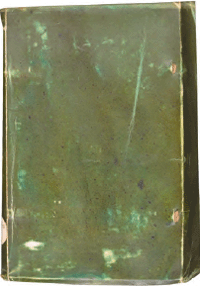 Figure 1: Euripides, Tragaedia Hecuba. Leipzig: in officina Georgii Hantschii, 1555, bound with: Martin Luther, Ein Sermon von dem hochwürdigen Sakrament des heiligen wahren Leichnams Christi (...). Basel: Thomas Volfius, 1524. Left cover (Wolfenbüttel, Herzog August Bibliothek, 107.6 Ethica)
| |
[pagina 120]
| |
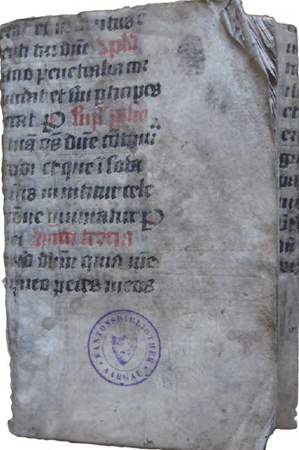 Figure 2: Gallus Etschenreutter, Von den aller heilsamsten Bädern / Saurbrunnen / vnde anderer wasser / so in Teuschland bekande vnd erfahren (...). [S.l.: s.n.], 1616. Left cover, with fore-edge flap (Aarau, Kantonsbibliothek, B. 1485)
Parchment was soon replaced by covers either made from a thin millboard or the thick cover paper known as cartonnage, which were also very closely similar to laced-case covers made at the same time. It would appear that both types of case - laced and adhesive - continued to be made side by side into the eighteenth century (fig. 3). In some cases the choice of case type seems to have been somewhat arbitrary. Within the ten volumes of Numismata historica published in Nuremberg from 1700 to 1710 now in the Helmstedt University Library, all but one of the otherwise identical covers was attached by adhesive, the exception being that for 1701, which has a laced-case cover (fig. 4).Ga naar voetnoot9 It is hard to explain this phenomenon, though possibly it represents the work of a binder who was not responsible for the other volumes and preferred this method of construction. | |
[pagina 121]
| |
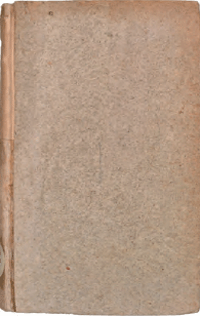 Figure 3: Girolamo Brussoni, Il carrozino alla moda. Venice: Giovanni Recaldini, 1658, in a one-piece adhesive-case binding of a thin couched laminate board (Wolfenbüttel, Herzog August Bibliothek, 120.38 Ethica).
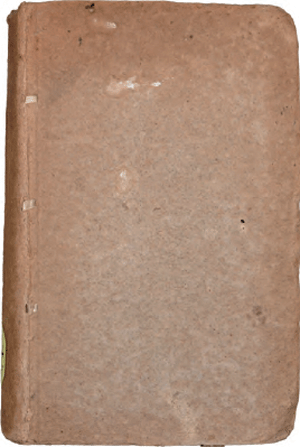 Figure 3: Catharina Dulcis, Schola Italica. Cologne: Peter Henning, 1641 in a laced-case binding of an almost identical material and formation (Wolfenbüttel, Herzog August Bibliothek, P 954.8o Helmst)
Similar bindings with one-piece cases were made until at least the third quarter of the eighteenth century throughout the German-speaking parts of Europe. They were also made in the Low Countries, where adhesive cases are found from the third quarter of the seventeenth centuryGa naar voetnoot10 and in France, where it seems adhesive cases were not used until the eighteenth century.Ga naar voetnoot11 In Italy, adhesive cases were made in the same way as those found on the much more numerous laced-case bindings in both parchment and cartonnage, and are therefore found with turn-ins, a feature that is not found on the | |
[pagina 122]
| |
northern-European versions.  Figure 4: Joachim Negelein, Numismata Historica Anni MDCCII. Nuremburg: Joh. Andr. Endter p.m. filius & haeredes, 1702. Right cover of a one-piece adhesive-case binding of cartonnage.
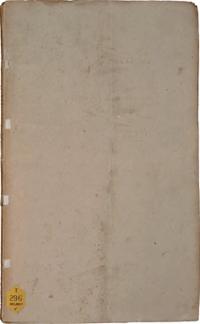 Figure 4: Joachim Negelein, Numismata Historica Anni MDCCI. Nuremburg: Joh. Andr. Endter p.m. filius & haeredes, 1701. Right cover of a laced-case binding of identical material and formation (both Wolfenbüttel, Herzog August Bibliothek, T 296.2o Helmst.)
A copy of Boccaccio printed in Amsterdam in 1679 survives in a parchment cover with turn-ins, with an inscription recording its purchase in Livorno in 1724, by which date it must have been bound (fig. 5).Ga naar voetnoot12 One-piece case bindings were also made in England, but are extremely rare, and only two examples on printed books have so far been recorded (fig. 6).Ga naar voetnoot13 It is quite likely that they owe their existence to one or more of the German binders working in England in the second half of the eighteenth century. Both of these English examples have secondary covers of blue | |
[pagina 123]
| |
paper, and the enhancement of such one-piece cases with coloured or decorated secondary covers is not uncommon in all the countries where such bindings were made, using the decorated papers that were widely available to the booktrade at the time. 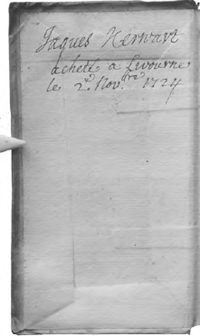 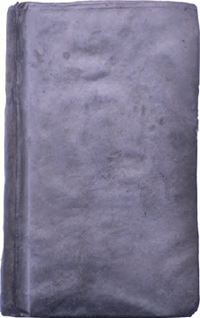 Figure 5: Giovanni Boccaccio, Il Decamerone di Messer Giovanni Boccaccio Cittadino Fiorentino. Si come lo diedero alle stampe gli SS'i Giunti l'Anno 1527.
Amsterdamo, 1679, showing the interior and exterior of the left cover (The National Trust, Nostell Priory, lb.iv.5.12) In Germany, relatively elaborate decoration can be found on adhesive-case bindings from early in the seventeenth century, but tooled decoration, if there was any, was carried out after the book was cased-in, and was not prepared in advance off the book.Ga naar voetnoot14 An adhesive case binding covered in parchment on an edition of 1721 was similarly tooled after the bookblock was cased in with the initials of its owner (ASAC) and the date 1721.Ga naar voetnoot15 At some point around 1700, a new style of adhesive case binding came into use in Germany, in which the case was made from three components - two boards and a creased and folded spine-piece, or gebrochener Rücken (fig. 7). This created a functional, durable and above all cheap binding, as is evident from an inscription dated 31 December 1768 on the flyleaf of an edition printed in the same year, where the cost of the binding was recorded as being one eighth of that of the printed sheets.Ga naar voetnoot16 The book- | |
[pagina 124]
| |
blocks of some of the earlier examples of three-piece case bindings retain uncut edgesGa naar voetnoot17 which indicates that they were regarded as temporary bindings when they were first made, but it was not long before evidence can be found in the form of cut and decorated edges and stuck-on endbands that the German book-buying public was soon happy to consider them as permanent bindings.Ga naar voetnoot18 They were given secondary covers of coloured or decorated papers and often have tooled title labels. However, these secondary covers were traditionally added to the binding only after the cases were attached to the book-block, thus neccessitating a two-part process that did not lend itself to rapid mass-production. Even in some later examples, where it appears that the secondary cover was pasted to the case before covering, as in a Swiss edition from 1846,Ga naar voetnoot19 the working of the paper cover into the grooves along the joint, which are an inherent part of the design of this type of case, would have prevented very rapid work. 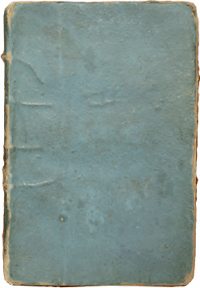 Figure 6: Thomas Gray, Poems by Mr. Gray. London: printed for J. Dodsley, 1768, showing the left cover (Melbourne, State Library of Victoria, rares 821.61)
 Plautus, Mr. Cooke's Edition and Translation of the Comedys of Plautus, vol. 1. London: printed by and for J. Purser, 1750, showing the left cover (The National Trust, Calke Abbey, F.g.18)
The gebrochener Rücken appears to have been taken to France in the late eighteenth century by Alexis Bradel, where it became known as the ‘Reliure Bradel’ and was widely used in the first decades of the nineteenth century, and continued to be made into at | |
[pagina 125]
| |
least the middle of the century, as evidenced by a relatively late example printed in 1844 and presented as a school prize in April 1846.Ga naar voetnoot20
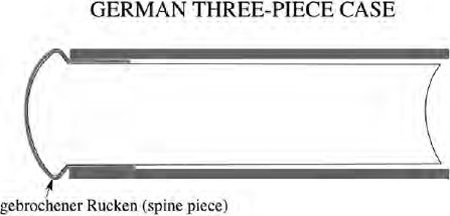 Figure 7: Cross-section of the structure of a German three-piece binding
Three-piece case bindings were also made in England at least as early as the second decade of the nineteenth century. They were used on books bound for Sir Richard Colt Hoare, an extremely wealthy man who wrote diaries when he travelled abroad and published these for distribution to his friends and for sale on his return. A copy of one of these,Ga naar voetnoot21 preserved at his country house, Stourhead, was printed in Bath, which was not far from Stourhead, but almost certainly bound in London by the binder who made his gold-tooled leather bindings - a man who called himself Charles Lewis, but who was born Karl Ludwig, the son of one German immigrant binder, Johann Ludwig, and apprentice to another, Henry Walter (born Heinrich Walther), all working for fashionable clients in the West End of London. Another example of a three-piece case binding made in England survives with uncut edges and a secondary covering of cream-coloured paper on the spine and blue paper on the sides.Ga naar voetnoot22 This is the patttern of covering found on countless publishers' bindings of the late eighteenth and early nineteenth centuries in England which were bound in boards with tight backs, but it is impossible to know from a single recorded example whether this structure and covering might be found beyond its use on this privately-printed book. It is no surprise that this type of adhesive-case binding was also used by the German bookseller Rudolph Ackermann in November 1822 for his Forget-Me-Not. A Christmas and New Year's Present for 1823,Ga naar voetnoot23 which brought the tradition of the Taschenbuch to the | |
[pagina 126]
| |
United Kingdom, where it was soon imitated by British publishers, along with the three-piece case construction.Ga naar voetnoot24 The well-known silk-covered bindings used on his Keepsake by Edward Heath retained this structure, for one edition of which 4000 yards of silk were purchased.Ga naar voetnoot25 Although some publishers used this type of case outside the field of the gift books and annuals,Ga naar voetnoot26 it did not allow the sort of increased rates of production and low cost that the booktrade required, and it seems to have been more or less abandoned in the United Kingdom by 1830. 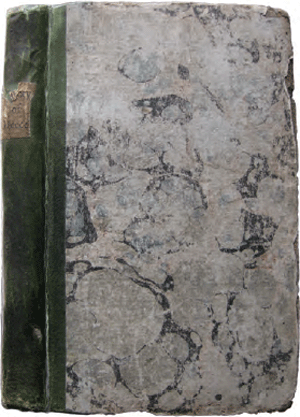 Figure 8: A New History of the Grecian States. London: E. Newbery, 1786, showing the spine and the left cover (author's collection)
A more significant innovation in England was introduced in 1760, when Edward Newbery, a very successful publisher of children's books, devised a case binding which he described as bound ‘in the vellum manner’ which could be ‘new bound for a penny’ if the cover became ‘stained or rubbed’ (fig. 8).Ga naar voetnoot27 This claim shows that Newbery was from the outset aware of the structural advantage of providing a binding that could be made in two separate units (the sewn textblock and the cover). The books were sewn on flat parchment sewing supports, and the design probably derived from the typical Dutch laced-case parchment bindings with boards. In 1774, Newbery claimed to have | |
[pagina 127]
| |
sold 14,000 books in this binding and that not over 100 had been returned for new covers.Ga naar voetnoot28 These were the first commercially succesfull adhesive-case bindings made in the United Kingdom; his other innovation, which has received much attention from bibliographers, was the use of printed labels on the spines.Ga naar voetnoot29 These bindings remained in common use until at least the end of the century.Ga naar voetnoot30 It was another two decades before the Gift Books first appeared in Britain, but their three-piece case construction was almost immediately overtaken by the most important innovation of them all - the combination of adhesive-case binding and covers made from specially-prepared bookcloth. The publisher central to this development was William Pickering, who had used cloth for the half bindings on his 1822 edition of Chaucer, in which the boards were laced onto the bookblock by means of the sewing-support slips, in the traditional manner.Ga naar voetnoot31 By 1825, the binder working for Pickering had devised a method for making a case which involved joining the two boards before they were covered with cloth with a quarter lining of paper, turned in at the head and tail of the boards, which was very similar to the quarter linings used on English paper-covered publishers' bindings (fig. 9). The crucial difference between the Pickering case and the German three-piece case is that the spine piece is adhered to the outside of the boards, allowing the case to be covered with bookcloth easily without the need to work the bookcloth into the grooves formed along the spine-edges of the boards on all the German-style cases.  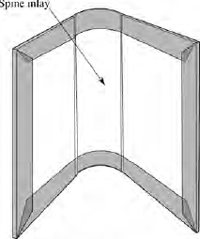 Figure 9: The construction of the first Pickering adhesive case and the standard case with a spine inlay
| |
[pagina 128]
| |
This development can be dated quite precisely by an advertisement found in some sets of the first edition to be so bound, in a glazed red calico, dated 1 June 1825.Ga naar voetnoot32 One incomplete set of this edition is of particular interest in that volumes one and eight have adhesive case bindings, whereas the other surviving volumes of the set (two, five and seven) are bound in boards (i.e. the sewing supports slips were laced into the boards before the books were covered) and not case-bound (fig. 10).Ga naar voetnoot33 This would seem to suggest that the process was in development as the edition was being bound for sale, but that the sets could be made up indiscriminately from the two different bindings, as they are externally identical. This phenomenon creates a difficulty when trying to work out the history of these early case bindings, as careful examination is required to distinguish between the two different structures, as both have hollow backs. 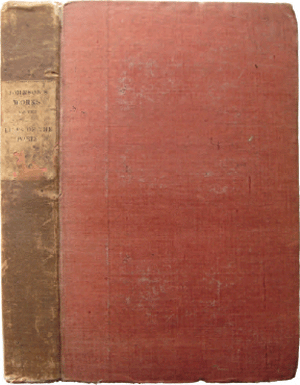 Figure 10: Samuel Johnson, The Works of Samuel Johnson, LL.D., 9 vols. London: printed for William Pickering, London; and Talboys and Wheeler, Oxford, 1825, showing the spine and left cover. The edge of the quarter lining can be seen under the bookcloth about one fifth of the way across the board from the spine (author's collection)
The use of the quarter lining, however, involved some extra work in making the cases, as not only were the linings turned in at head and tail, but the cases then had to be covered in an additional operation. Within a few years, however, the bookbinders had simplified the case, by substituting a spine inlay which was the exact width of the spine of the bookblock and left a small gap between its edges and the spine edges of the boards. The three components were then held together by the bookcloth covering, allowing a much more rapid manufacturing process,Ga naar voetnoot34 which, in the 1890s, could be done entirely | |
[pagina 129]
| |
by a machine - the Sheridan case-maker.Ga naar voetnoot35 The exact date at which this development took place has not yet been established, but the new-style case was certainly in use at the beginning of the 1830s. A further development was the introduction of the heated arming press, which allowed bookcloth to be blocked in gold. The first use of the press on bookcloth can be dated quite precisely to February 1832, the date of the publication of the second volume of the fourteen-volume edition of Byron, which was published one volume each month from January of that year.Ga naar voetnoot36 The first volume has a printed paper label, as the gold-blocking process was clearly not ready in time, but from volume two onwards all the titles are blocked in gold directly onto the bookcloth. Two slightly different versions of the block were in fact used, allowing two cases to be titled at the same time, making full-use of the economic advantage offered by case-bindings of being able to manufacture the cases separately from the sewing and preparation of the bookblocks. At the same time, the manufacturers of bookcloth were also developing new cloths for books (the 1832 Byron is in a dark green moiré or watered silk pattern cloth), with a steady stream of new grains and colours.Ga naar voetnoot37 These cloths, as well as glazed papers and leather, were combined with the work of professional designers, and produced an enormous range of work from plain, functional bindings to an ever more remarkable series of designs,Ga naar voetnoot38 all of which could be reproduced in large quantities at a relatively low unit price. This was made possible because of the way in which the adhesive case could be prepared and decorated off the book. The anonymous German binders of the first known adhesive-case bindings could not have guessed at the extent to which the bindings they pioneered in the 1520s would be developed three hundred years later, but there is an unbroken line between their work and the modern hardback book which had made its first appearance by 1825, the story of a simple economy changing the way the booktrade was able to design and mass-produce bound books for sale. | |
[pagina 130]
| |
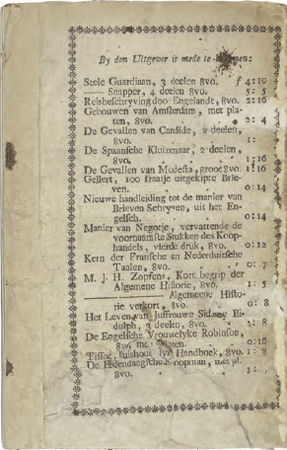  Figuur 1: Voor- en achterplat van Korte schets van konsten en wetenschappen (foto Koninklijke Bibliotheek)
|
|

